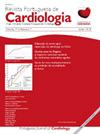使用心电图标准预测心脏再同步治疗的反应:系统综述。
IF 1.6
4区 医学
Q3 CARDIAC & CARDIOVASCULAR SYSTEMS
引用次数: 0
摘要
背景:心脏再同步化治疗(CRT)是心力衰竭的既定治疗选择,但尽管经过仔细选择,仍有大约30%的患者对这种治疗没有反应。标准心电图(ECG)是一种实用且廉价的工具,用于评估对CRT的潜在反应,但关于不同ECG参数的值存在相互矛盾的证据。因此,我们对现实世界的研究进行了系统回顾,以评估植入前标准心电图参数在预测CRT反应中的价值。方法:检索PubMed、Scopus、Web of Knowledge等在线数据库,识别分析性研究,并通过证据表综合结果。结果:本综述纳入了62篇符合条件的文章。传统的反应预测指标为QRS持续时间≥150ms和存在左束支阻滞(LBBB)形态。当代心电图参数,如QRS缺口或碎片的存在、S波评估、侧导联到本征偏转(ID)的时间、导联比(LOR)≥12,也显示出对CRT反应的巨大潜力。结论:本综述强调了标准心电图在预测CRT反应方面的良好能力,特别是在使用更现代的预测指标时,同时强调了进一步研究以验证这些预测指标的预后价值的必要性。本文章由计算机程序翻译,如有差异,请以英文原文为准。
Prediction of response to cardiac resynchronization therapy using electrocardiographic criteria: A systematic review
Background
Cardiac resynchronization therapy (CRT) is an established therapeutic option for heart failure, but despite careful selection around 30% of the patients still do not respond to this therapy. The standard electrocardiogram (ECG) is a practical and inexpensive tool to assess potential responders to CRT but with conflicting evidence regarding the value of different ECG parameters. As such, we conducted a systematic review of real-world studies to assess the value of pre-implantation standard ECG parameters in predicting response to CRT.
Methods
We searched on PubMed, Scopus, and Web of Knowledge online databases to identify analytic studies and synthesized results through evidence tables.
Results
Sixty-two eligible articles were included in this review. Traditional predictors of response were QRS duration ≥150 ms and the presence of left bundle branch block morphology. Contemporary ECG parameters, such as the presence of QRS notching or fragmentation, the S wave assessment, the time to intrinsicoid deflection (ID) in lateral leads, and a lead one ratio ≥12 also showed great potential in assessing response to CRT.
Conclusions
This review highlights the promising capability of the standard ECG in predicting response to CRT, particularly when using more contemporary predictors, while emphasizing the necessity for further research to validate the prognostic value of these predictors.
求助全文
通过发布文献求助,成功后即可免费获取论文全文。
去求助
来源期刊

Revista Portuguesa De Cardiologia
CARDIAC & CARDIOVASCULAR SYSTEMS-
CiteScore
2.70
自引率
22.20%
发文量
205
审稿时长
54 days
期刊介绍:
The Portuguese Journal of Cardiology, the official journal of the Portuguese Society of Cardiology, was founded in 1982 with the aim of keeping Portuguese cardiologists informed through the publication of scientific articles on areas such as arrhythmology and electrophysiology, cardiovascular surgery, intensive care, coronary artery disease, cardiovascular imaging, hypertension, heart failure and cardiovascular prevention. The Journal is a monthly publication with high standards of quality in terms of scientific content and production. Since 1999 it has been published in English as well as Portuguese, which has widened its readership abroad. It is distributed to all members of the Portuguese Societies of Cardiology, Internal Medicine, Pneumology and Cardiothoracic Surgery, as well as to leading non-Portuguese cardiologists and to virtually all cardiology societies worldwide. It has been referred in Medline since 1987.
 求助内容:
求助内容: 应助结果提醒方式:
应助结果提醒方式:


